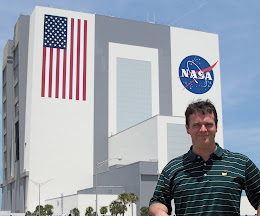 |
| The future of supersonic flight across land will be tested with NASA X-59. (LMA) |
CAPE CANAVERAL, Fla. — An experimental NASA aircraft designed to perform supersonic commercial travel while reducing the sound generated by sonic booms was approved for final assembly on Thursday.
The X-59, also known as the Low-Boom Flight Demonstrator (LBFD), is NASA’s first experimental aircraft in three decades. Aircraft construction is taking place today at the Lockheed Martin Aeronautics Skunk Works plant in Palmdale, California.
A $250-million contract awarded to Lockheed Martin in 2018 will see the aircraft built and tested during 2020. The X-59 is expected to make its inaugural flight from Edwards AFB, Calif. in 2021 to deem it is safe to fly.
Following a series of test flights, NASA will receive the aircraft in late-2021 to close out Phase one. Phase two will have a NASA test pilot first fly the X-59 to Mach 1 over the Edwards test range in 2022.
NASA research test pilot Jim Less is one of two pilots waiting in the wings to perform those first supersonic flight tests. “A supersonic manned X-plane,” Less said during a NASA interview. “This is probably going to be a once-in-a-lifetime opportunity for me. We’re all pretty excited.”
The X-59, also known as the Low-Boom Flight Demonstrator (LBFD), is NASA’s first experimental aircraft in three decades. Aircraft construction is taking place today at the Lockheed Martin Aeronautics Skunk Works plant in Palmdale, California.
A $250-million contract awarded to Lockheed Martin in 2018 will see the aircraft built and tested during 2020. The X-59 is expected to make its inaugural flight from Edwards AFB, Calif. in 2021 to deem it is safe to fly.
Following a series of test flights, NASA will receive the aircraft in late-2021 to close out Phase one. Phase two will have a NASA test pilot first fly the X-59 to Mach 1 over the Edwards test range in 2022.
NASA research test pilot Jim Less is one of two pilots waiting in the wings to perform those first supersonic flight tests. “A supersonic manned X-plane,” Less said during a NASA interview. “This is probably going to be a once-in-a-lifetime opportunity for me. We’re all pretty excited.”










